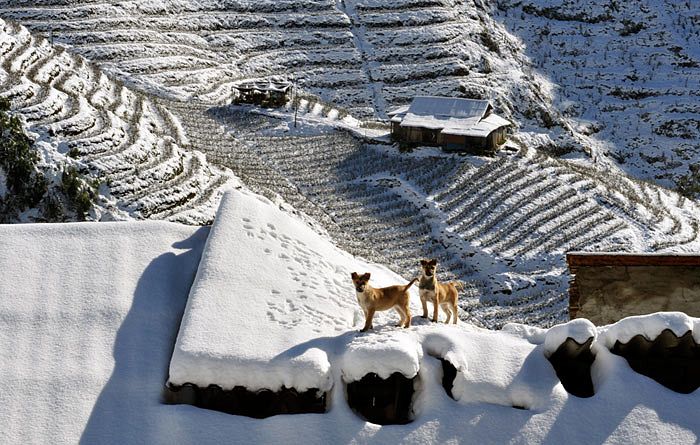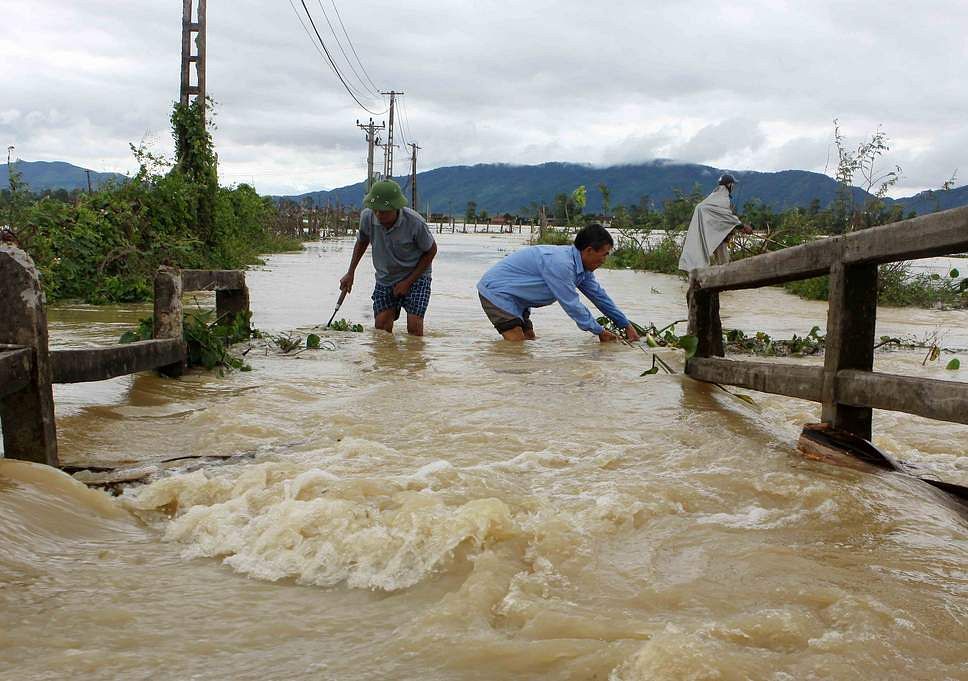A new bed of centuries-old stakes was recently discovered in Hai Phong, providing scientists with more clues into the storied Battle of Bach Dang.
The Vietnam Institute of Archaeology and the Hai Phong People’s Committee recently held a seminar reporting their findings of the excavation of the Cao Quy bed of stakes, reports Tuoi Tre. Based on preliminary dating, scientists believe that these wooden stakes “might be related to the Battle of Bach Dang during the Tran Dynasty in 1288.”

The excavation sites from above. Photo via the Hai Phong Department of Culture and Sports.
Before coming up with the results, archaeologists spent two months excavating three sites in Cao Quy field, Lien Khe Commune, Thuy Nguyen District, Hai Phong. They span a total area of almost 1,000 square meters, housing 27 wooden stakes, mostly made of sến (Shorea roxburghii) and lim (Erythrophleum fordii). The stakes measure from 10 to 40 centimeters in diameter; their estimated age was determined through carbon dating.
According to Zing, back in October, a farmer in Lien Khe was tilling his land when he discovered two tree trunks spanning more three meters with a diameter of 30 centimeters. This was not the first time such stakes were found in the proximity of the Bach Dang River. Three beds of stakes were discovered in 1958, 2005 and 2009 in Quang Yen Commune, Quang Ninh Province.

A Dong Ho painting depicting Ngo Quyen during the Battle of Bach Dang in 938.
The Bach Dang River is the natural border between Quang Ninh and Hai Phong and a strategic link from the Gulf of Tonkin to Hanoi (then Thang Long). Therefore, the waterway was a common battleground for foreign forces trying to invade Vietnam. It bore witness to three major battles in 938, 981 and 1288.
In the 1288 battle, Supreme Commander Tran Hung Dao recreated a tactic successfully employed by Ngo Quyen in 938. He studied tidal patterns of the river and planted beds of stakes underwater to trap enemy ships during low tide. The geographical knowledge, coupled with ambushes and a Fabian strategy, helped Vietnam (then Dai Viet) ward off Mongol forces.
[Top image via VnExpress]














